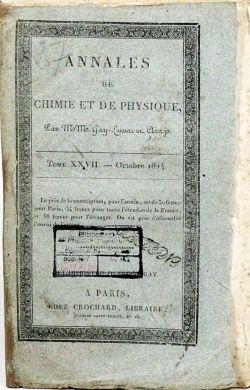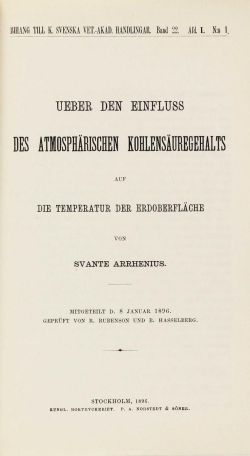 In 1962, the American marine biologist and natural history writer, Rachel Carson, published her seminal book, Silent Spring. Carson’s powerful and poetic writing was beautifully complemented by the detail-oriented drawings of American illustrators Lois and Louis Darling. Today, it is considered to be one of the most powerful natural history books ever written; the spark that ignited the environmental movement. The title, “Silent Spring,” originates from the description of a scenario in which all spring songbirds were killed by DDT.
In 1962, the American marine biologist and natural history writer, Rachel Carson, published her seminal book, Silent Spring. Carson’s powerful and poetic writing was beautifully complemented by the detail-oriented drawings of American illustrators Lois and Louis Darling. Today, it is considered to be one of the most powerful natural history books ever written; the spark that ignited the environmental movement. The title, “Silent Spring,” originates from the description of a scenario in which all spring songbirds were killed by DDT.
In 1958, Carson was prompted to investigate the use of pesticides when a friend wrote to her about the fact that DDT was killing birds in nearby Cape Cod. After communicating with many scientists, she demonstrated that DDT entered the food chain and accumulated in the fatty tissues of animals, including humans, causing genetic damage and disease such as cancer. The bald eagle, the US national symbol, experienced deterioration to the shell of its egg, while in the river waters, the salmon passed it up the food chain to reach human consumers.
Carson’s argument swayed President John F. Kennedy to order an investigation of the defending chemical companies, vindicating her research. The use of DDT came under close scrutiny and in 1972, eight years after Carson’s death; it was banned in the US as a crop spray. The UK followed in 1984, and in 2001; the Stockholm Convention introduced a worldwide ban on the agricultural use of DDT. Today, its sole legal use is to combat malaria-carrying mosquitoes.
The first edition of Silent Spring, published by Houghton Mifflin Company, has been re-printed more than 10 times with additional editions by BOMC, Random House, Fawcett Crest, Penguin Books, Mariner, Folio Society, Easton Press, Thorndike Press and the first UK edition by Hamish Hamilton. Naturally, the first printing of the first American edition is quite scarce, and to secure a copy in nice condition is quite difficult and pricey.
 Unlike the substance DDT, whose detrimental effect on the environment took decades to remedy, our climate change problem, which was first introduced 200 years ago is still being debated. The solution is also not as simple as a worldwide ban, it will take decades to develop and deploy clean-energy innovations that are needed to make our world healthy again.
Unlike the substance DDT, whose detrimental effect on the environment took decades to remedy, our climate change problem, which was first introduced 200 years ago is still being debated. The solution is also not as simple as a worldwide ban, it will take decades to develop and deploy clean-energy innovations that are needed to make our world healthy again.
The idea of “greenhouse gases”, was first introduced by Joseph Fourier, in his quantitative analysis of the phenomenon, published in Annales de Chimie et de Physique Tome XXVII October 1824. Concern was raised over the impact of human activities on the earth’s climate which are based on the fact that “greenhouse gases” produced by industrial activity, including particularly carbon dioxide (CO2), can absorb, and convert infrared radiation into heat, which emitted from the earth’s surface, can thus increase the average global temperatures.
Svante Arrhenius, who is credited with the first quantitative analysis of carbonic acid (carbon dioxide) and its role in climate change, published the first climate model of its kind in 1896, showing that the halving of CO2 could have produced the drop in temperature initiating the ice age. Arrhenius calculated the temperature increase  expected from doubling CO2 to be around 5–6 °C (9.0–10.8 °F). His work, Ueber den Einfluss des Atmosphärischen Kohlensäregehalts auf die Temperatur der Erdoberfläche, was published in Stockholm in 1896, by P.A. Norsstedt & Söner. It was first published in English “On the Influence of Carbonic Acid in the Air upon the Temperature of the Ground,” in The Philisophical Magazine, in April of 1896. Arrhenius won the Nobel Prize in Chemistry in 1903, in recognition of the extraordinary services he rendered to the advancement of chemistry by his electrolytic theory of dissociation.
expected from doubling CO2 to be around 5–6 °C (9.0–10.8 °F). His work, Ueber den Einfluss des Atmosphärischen Kohlensäregehalts auf die Temperatur der Erdoberfläche, was published in Stockholm in 1896, by P.A. Norsstedt & Söner. It was first published in English “On the Influence of Carbonic Acid in the Air upon the Temperature of the Ground,” in The Philisophical Magazine, in April of 1896. Arrhenius won the Nobel Prize in Chemistry in 1903, in recognition of the extraordinary services he rendered to the advancement of chemistry by his electrolytic theory of dissociation.
Is it possible, that as we progress to get to zero net greenhouse gas emissions in every sector of the world economies within the next 50 years, that there will be a number of publications that will be recognized? A number of collectible rare books should emerge in the years to come, as innovations become reality in tackling the big emitters of greenhouse gases. One aspect that Rachel Carson’s contribution has made obvious is that the next generation of rare book on the prevention of a climate disaster, will be the one that will force governments to take action worldwide.
{ 0 comments… add one now }
{ 1 trackback }